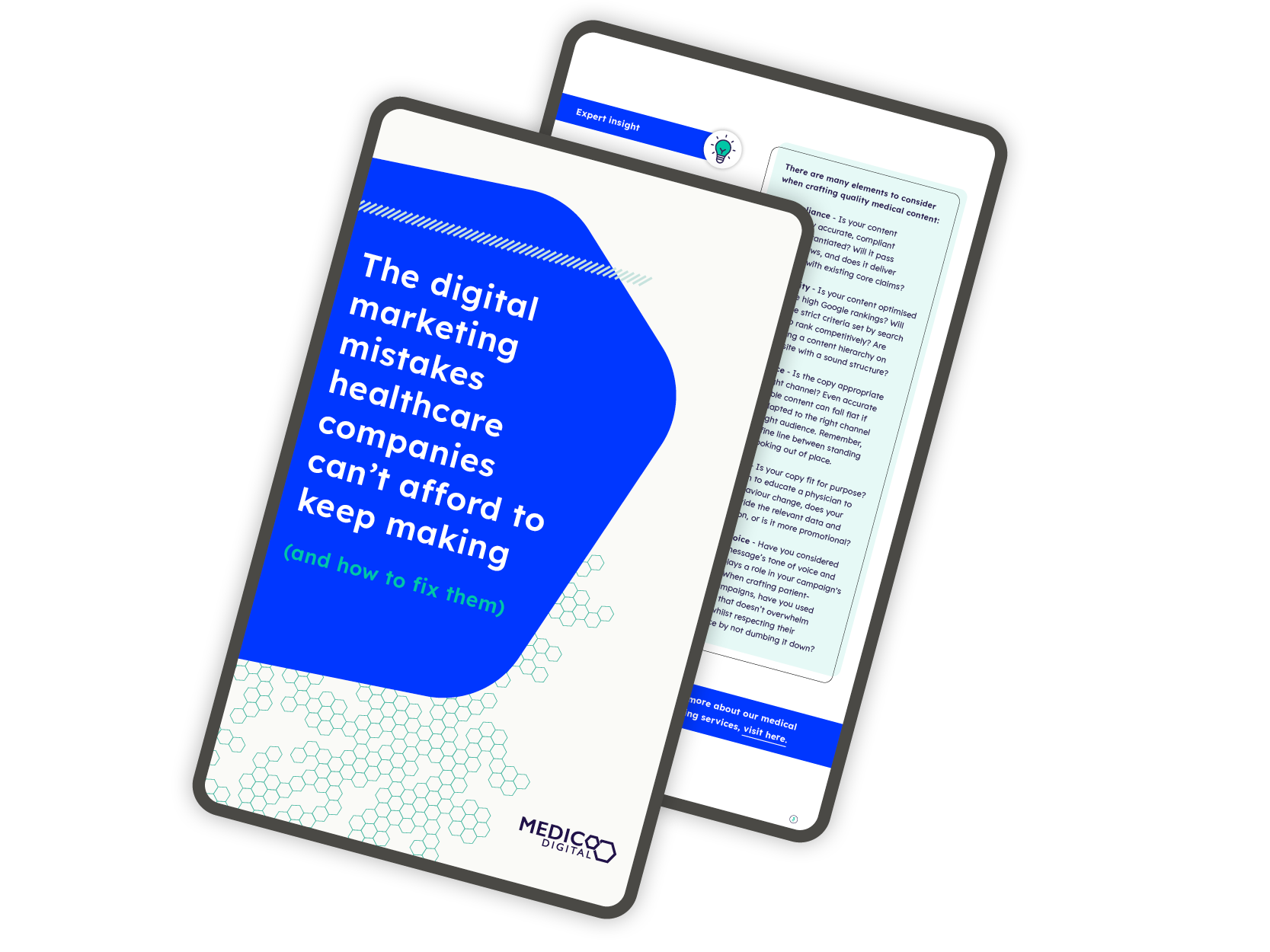If you own or manage a pharmacy which is aiming to strengthen its online profile, you are certainly not alone in 2020. As customers increasingly turn to the convenience of buying online, there has never been a more important time to establish an internet presence and bolster your brand.
In the UK, pharmaceutical advertising to the general public is subject to regulations in the Blue Guide, produced by the government’s Medicines & Healthcare products Regulatory Agency (MHRA).
In this blog, we break down some of the key legal considerations for pharmacies advertising in the UK, including pharmacy advertising guidelines in the Blue Guide.
How to advertise your pharmacy to the general public
When advertising your pharmacy and the products you sell, you must bear in mind some ‘essentials’ for the advert. Any advert should include; the name of the product; the name of any active ingredient it contains (if only one); information regarding what the medicine can be used for; and an ‘always read the label’ instruction.
There are also some things which you must not do when advertising to the public. These include promoting any medicine use that is not covered by the SPC (summary of product characteristics), which is a document that includes a medicine’s approved conditions of use.
Secondly, you should never make any misleading claims or use imagery that could result in an inaccurate self-diagnosis. And it is important to avoid anything which could be perceived as an implication that seeing a doctor is not necessary.
If you had planned to quote any testimonials by celebrities, or recommendations from healthcare professionals or scientists, you should know that this is not allowed. When it comes to comparisons, pharmaceutical advertising to the public is not permitted to suggest a medicine is different, similar or superior to other named products.
Be very careful when marketing the natural or organic elements of a product. Claiming that a medicine’s effectiveness or safety is because it is natural is not allowed. And you should never suggest that medicine can improve normal health, or that normal health can be affected if a medicine is not taken.
Other advertising strategies which are not permitted include promotion by giving away free samples of medicine, and any kind of advertising which is specifically directed at children (under-16s).
How to advertise your pharmacy to prescribers and suppliers of medicine
When you are advertising your pharmacy and its products to healthcare professionals and others who are permitted to prescribe or supply products, there is specific product information which each advertisement needs to include. This is the product name and the active ingredients next to “the most prominent display of the name”. The advert also needs to display a summary of information which is found in the SPC, covering adverse reaction and precautions, method of use, dosage, and contraindications.
Other information required is a product’s legal classification, the conditions which the medicine can be used to treat, the cost of the product, and licence number and supplier details.
How to advertise your pharmacy online
The same rules apply when advertising your pharmacy and its products online as to other advertising channels. The MHRA’s Blue Guide confirms that UK rules will apply whenever your online advertising is “material posted on UK websites and/or aimed at a UK audience”. Your pharmacy’s advertising will be subject to UK guidelines if it has been published online with the authority of a UK- based company, or via an affiliate of a UK-based company.
The guidelines state that an internet user based in the UK should not need to navigate to a non-UK website in order to access your pharmacy’s product information, including products leaflets and SPCs.
How important is your pharmaceutical website design?
There are several important considerations to make when designing a pharmacy website which advertises products to both the public, and prescribers and suppliers of medicine. The MHRA states that “sections of a website aimed at healthcare professionals and containing promotional material should ideally be access restricted”. If no access restriction is in place on the website, then a pharmacy’s website sections, including advertising, should be clearly divided between each target audience – consumers and healthcare professionals. This is to ensure that members of the public are not directed to information which is not intended for them.
The MHRA does permit pharmacy websites which offer prescription dispensing services to list products and dispensing prices, so long as a “website dispensing service is aimed specifically at patients who already have a prescription, provided no product claims are made beyond a simple disease category”.
Advertising traditional herbal medicines and homoeopathic medicines
Note that every advertisement for traditional herbal medicine must include the following sentence: “Traditional herbal medicinal product for use in [include one or more indications for the product from its registration] exclusively based upon long-standing use as a traditional remedy.”
Homoeopathic medicine adverts should be based on the traditional use of the medicine, and should not; make an implication that the medicine’s use is derived from clinical evidence, or claim that its effectiveness has been proven.
How to make sure your abbreviated pharmaceutical advertising follows the guidelines
When designing small adverts for over the counter medicines, it is possible to put required information online, providing the web address is clearly labelled. As explained in Annex 5 of the Blue Guide, however, “short-form advertisements” must still “contain essential information compatible with the product SPC”.
Short-form advertisements can only be used for certain products. This will depend on; the product’s legal classification, whether it is being promoted for prescription supply or retail sale, and the size of the advertisement. For more information, refer to the Blue Guide.
With the MHRA’s Blue Guide and the Association of the British Pharmaceutical Industry’s (ABPI) Code of Practice in mind, getting pharmaceutical marketing and pharmaceutical website design leaves little room for error. Could your advertising campaigns benefit from the advice of a medical marketing specialist?




 Download for FREE
Download for FREE 